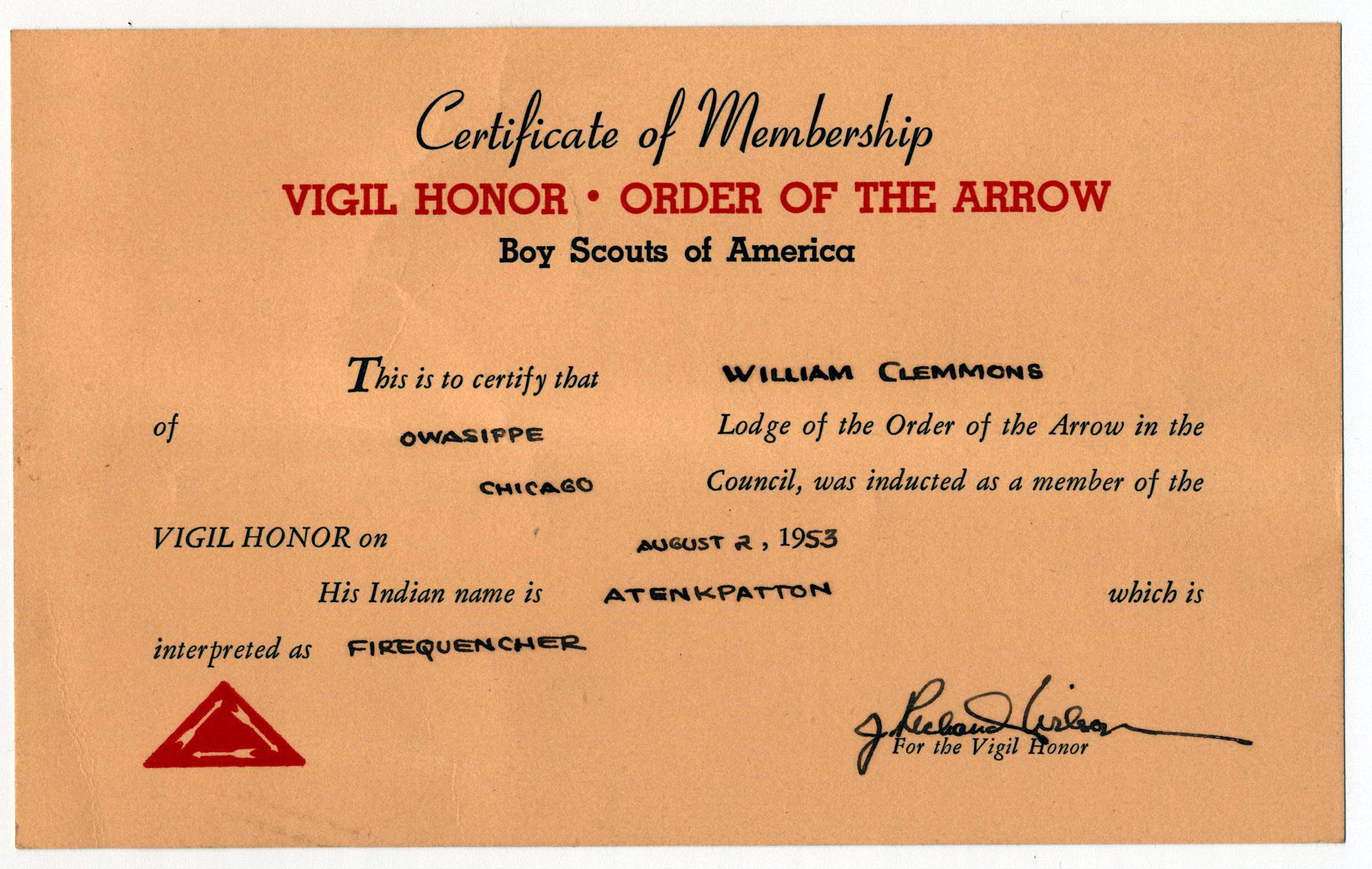G. Kellock “Kel” Hale was born January 17, 1904 in Philadelphia, Pennsylvania. He joined Scouts at the age of 12 (minimum age in those days) in 1916. During World War I, Kel sold more war bonds than any other Scout in Philadelphia. As a result of this achievement, Kel was selected as the Scout that would serve as Lord Baden-Powell’s Orderly when he came to visit Philadelphia.
Kel was inducted in the OA at its birthplace, Treasure Island, in 1918. He was one of the Council’s most decorated Scouts. By the time Kel was twenty-years old and attending the University of Pennsylvania he was an Eagle Scout with three Silver Palms (that would be at least 66 merit badges in 1924, a remarkable achievement in that era).
Following college, Hale moved to Mount Airy, North Carolina and went to work for the North Carolina Granite Company rising to the position of Secretary. In Scouting, Hale became a troop Scoutmaster, a position he would hold for 15 years until becoming District Commissioner. During his time as Scoutmaster, Hale founded Wahissa Lodge in Old Hickory Council at Camp Lasater on June 9,1938. Later that year Hale assisted with producing the 1938 National Meeting at Camp Irondale. Hale kept his Vigil receiving the name Kittelendam translated as “The Earnest” on August 10, 1940. Hale served in a leadership role at the 1940 National Meeting at Camp Twin Echo and received the Silver Beaver Award from his council in 1942.
Hale started numerous lodges throughout Region 6 (North Carolina, South Carolina, Georgia and Florida). In 1945 he was invited to the National Executive Committee meeting. His attendance was to assist in planning the 1946 National Meeting originally scheduled at the University of North Carolina at Chapel Hill, close to where Hale lived. However for various reasons the 1946 National Meeting had to be moved to Chanute Field, Illinois.
At the 1946 National Meeting Hale received the Distinguished Service Award. He also ran for and was elected as the Southeast representative to the National Executive Committee. In 1948, when the National Executive Committee was disbanded and the National OA Committee formed Hale was named as the first National OA Committee Chairman. Hale only served as Chairman for a year, when illness forced him to resign in 1949. Hale lamented that strict doctor’s orders required him to dispense with all activities and he was required to observe strict bed rest as the remedy at the time for fatigue.
Hale continued to serve on the National OA Committee until 1971. His last leadership position was serving as chairman of the Distinguished Service Award Committee. During the critical years of the Order when the OA fully integrated as part of the BSA, it was Hale along with H. Lloyd Nelson and Thomas Cairns that provided the essential servant leadership. Kel was a member of the BSA for 55 years and on the National OA Committee or its equivalent for over 25 years. G. Kellock Hale passed away on October 3, 1973.
2, OA, Profile, Scouting
 professional Scouting job in his hometown council in Springfield, Massachusetts after less than three years. Wood, only 26, decided that he preferred being a Field Executive and camp director.
professional Scouting job in his hometown council in Springfield, Massachusetts after less than three years. Wood, only 26, decided that he preferred being a Field Executive and camp director.